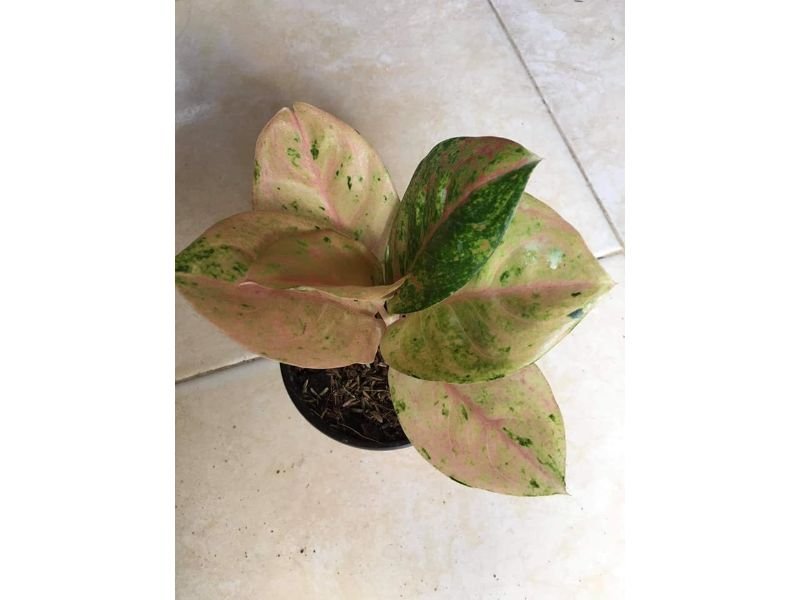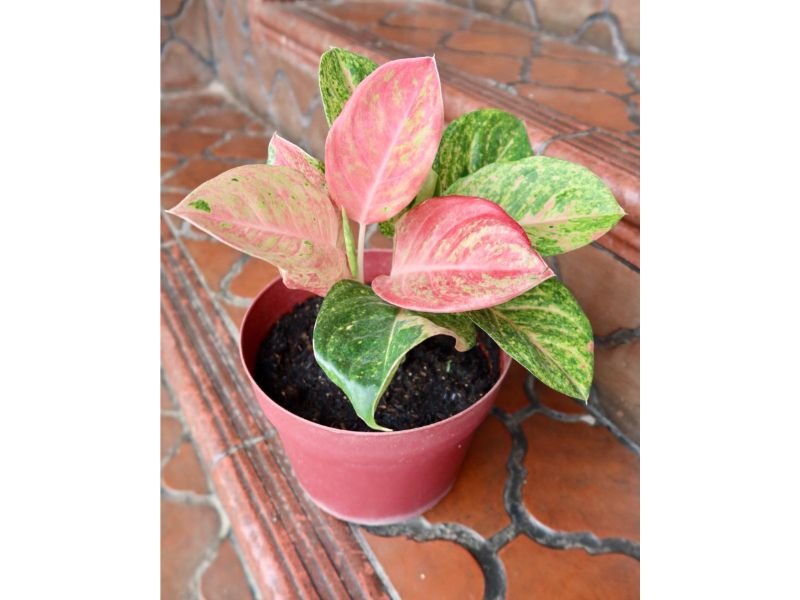Pink Emerald Aglaonema, also known as Chinese Evergreen, is a beautiful houseplant that has become a favorite among plant enthusiasts. It is named after its stunning pink and green leaves and is very easy to care for. This plant can grow up to 3 feet tall and 2 feet wide, making it the perfect addition to any living space or office.

Table of Contents
Definition of Pink Emerald Aglaonema
Pink Emerald Aglaonema is a tropical plant species that belongs to the Araceae family. It is native to Southeast Asia and comes in different variations of pink, green, and silver color combinations.
The leaves are long, oval-shaped with pointed tips, and grow from an upright stem or rosette. One of the reasons why this plant has gained popularity amongst indoor gardeners is because it requires minimal effort to care for, yet it still brings beauty and freshness into your home or office environment.
Brief history and origin
The origin of Pink Emerald Aglaonema can be traced back to China where it was first discovered in the 19th century by botanist Heinrich Schott. It was later introduced to Europe as an indoor plant decoration during the Victorian era when owning houseplants became fashionable.
Since then, hybridization techniques have been used by growers worldwide to produce new varieties with unique colors and patterns that suit different personal preferences. Today, Pink Emerald Aglaonema remains one of the most popular indoor plants due to its ease of care and aesthetic value.
Characteristics of Pink Emerald Aglaonema

Physical appearance
Pink Emerald Aglaonema is a stunning plant that is known for its unique and attractive foliage. The leaves of this plant are large and exhibit a glossy texture, which makes them appear shiny.
The leaf shape can vary from narrow to wide, but typically they are oval or elliptical in shape. Depending on the cultivar, the leaves can grow up to 10 inches long and 5 inches wide.
Color variations
One of the most striking features of Pink Emerald Aglaonema is its color variations. The leaves of this plant come in different shades of green with splashes or streaks of pink throughout, hence the name “Pink Emerald”.
Some cultivars may have more pink than others, but all are equally beautiful. The pink coloration can appear as dots or stripes on the leaves, or it can be more diffuse.
Growth habits and requirements
Pink Emerald Aglaonema is a slow-growing plant that reaches a maximum height of around 2-3 feet. This makes it an ideal choice for indoor spaces where space is limited.
In terms of light requirements, this plant prefers bright yet indirect sunlight. It can tolerate some shade but should not be placed in complete darkness for prolonged periods as it can stunt growth and cause yellowing leaves.
In terms of watering needs, Pink Emerald Aglaonema prefers soil that is moist but not waterlogged. Overwatering can lead to root rot and other fungal diseases that can quickly kill the plant.
The best way to ensure proper watering is by checking soil moisture levels regularly with a moisture meter or by sticking your finger an inch into the soil. When it comes to soil type and pH level, Pink Emerald Aglaonema thrives in well-draining soils with a pH range of 6.0-7.0.
It is recommended to use a mixture of peat moss, perlite, and sand to ensure proper drainage and moisture retention. Avoid using heavy soils or ones that retain too much moisture as they can lead to root rot and other fungal diseases.
Benefits of having a Pink Emerald Aglaonema in your home or office

Air purification properties
One of the most significant benefits of having a Pink Emerald Aglaonema in your home or office is its ability to purify the air. According to NASA, this plant is effective at removing harmful toxins such as benzene, formaldehyde, and trichloroethylene from indoor air. This makes it an excellent choice for people who are concerned about maintaining good indoor air quality.
The plant operates by absorbing toxic gases through its leaves and converting them into harmless substances that can be safely released back into the environment. It also helps to increase humidity levels in the surrounding area, which can be particularly beneficial during dry winter months when indoor heating systems tend to dry out the air.
Aesthetic appeal
In addition to its air purification properties, Pink Emerald Aglaonema is also prized for its aesthetic appeal. The plant has large, lush leaves with shades of pink and green that create a stunning visual display. Whether you choose to place it on a windowsill, desk, or tabletop, this plant is sure to add interest and beauty to any space.
Another benefit of the Pink Emerald Aglaonema is that it does not require much maintenance once established. With proper care, it can thrive for many years with minimal intervention on your part.
This makes it an ideal choice for busy individuals who want to enjoy the benefits of owning a houseplant without dedicating too much time or effort to caring for it. If you’re looking for a low-maintenance but visually appealing houseplant that also helps purify indoor air quality – look no further than Pink Emerald Aglaonema!
How to Care for Pink Emerald Aglaonema
Light Requirements
Pink Emerald Aglaonema is a low-light tolerant plant, but it still requires bright, indirect light to thrive. Place the plant in a location that receives bright, filtered light without direct sunlight.
Direct sunlight can burn the leaves and cause scorching. The best location for the plant is near a window where it can receive indirect light.
East or north-facing windows provide ideal lighting conditions for this plant. If you don’t have a window that provides enough light, you can use artificial grow lights to supplement natural lighting.
During different seasons, adjust the lighting to ensure proper growth and avoid overexposure or underexposure. During winter months when there is less sunlight, move your Pink Emerald Aglaonema closer to the window or increase its exposure to artificial lighting.
Watering Requirements
It’s important not to overwater or underwater your Pink Emerald Aglaonema as it can lead to root rot or dehydration respectively. Water the plant when the top inch of the soil feels dry. In general, this means watering once every 7-10 days during spring and summer months and once every 14 days during fall and winter months when growth slows down.
The amount of water you give your plant depends on factors like humidity levels in your home and pot size. As a general rule of thumb, water until water starts draining from the bottom of your pot through drainage holes.
This ensures even watering throughout the root system. To avoid overwatering or underwatering, consider using a moisture meter which will help indicate when it’s time for watering by measuring soil moisture levels at different depths within the potting medium.
Soil Type and pH Level
The ideal soil type for Pink Emerald Aglaonema is a well-draining potting mix with high organic content. A mixture of peat, perlite, and sand works well.
It’s important to avoid heavy soils that can cause waterlogging and root rot. Testing the pH level of your soil helps ensure that your plant is receiving the right nutrients it needs to thrive.
The ideal pH range for Pink Emerald Aglaonema is 6.0 to 7.0, which is slightly acidic to neutral. You can buy a soil pH testing kit online or at a local garden center, or send a soil sample to a professional laboratory for testing.
Caring for Pink Emerald Aglaonema requires proper lighting, watering techniques, and ensuring that it’s planted in suitable soil conditions with the correct pH levels. With these care tips in mind, you’ll be able to help your plant thrive and enjoy its beauty for years to come.

Gardening is my passion and growing plants indoors has always been a stress relief for me. Grow a banana tree in my apartment once (although failed to produce bananas).






